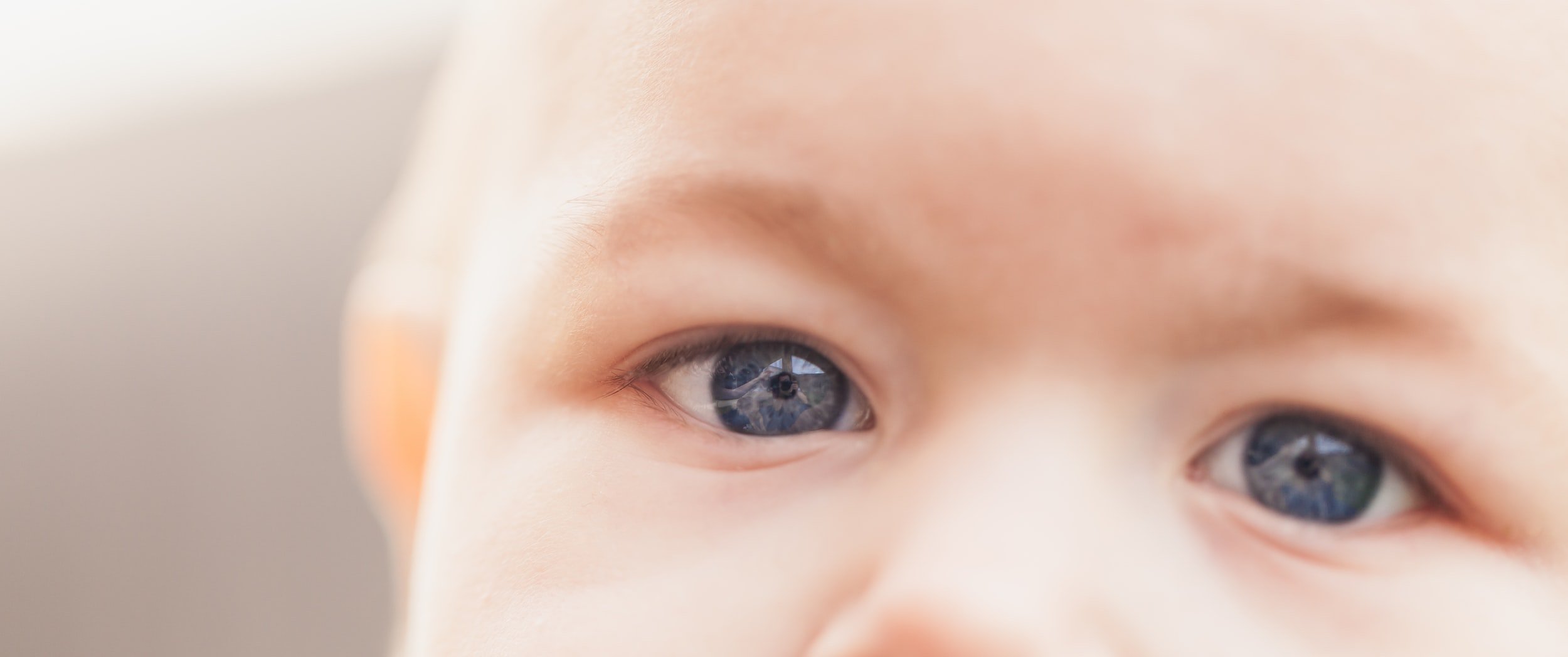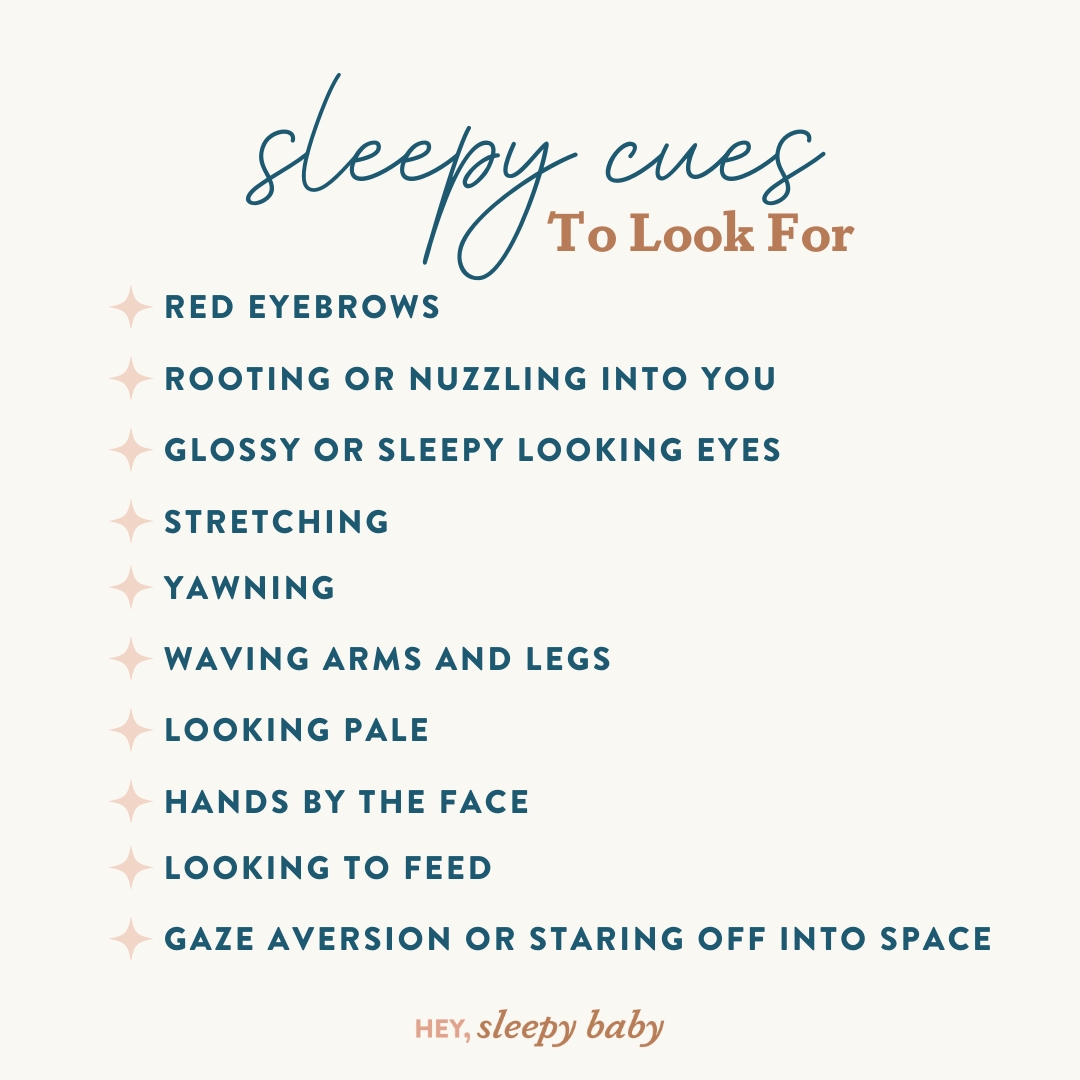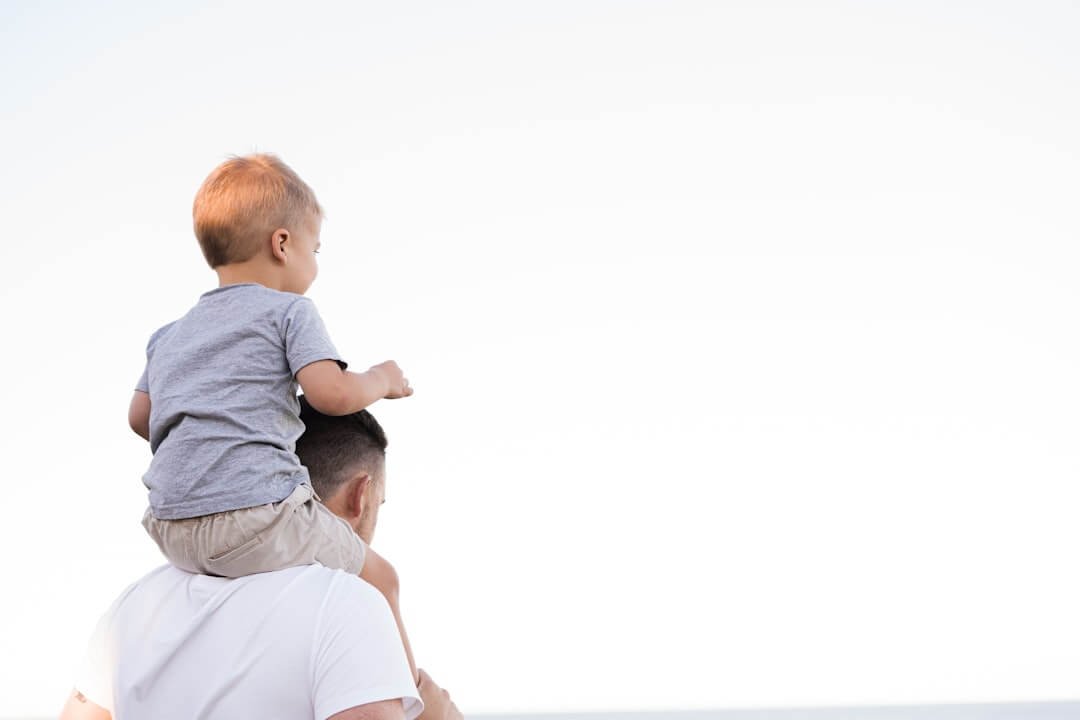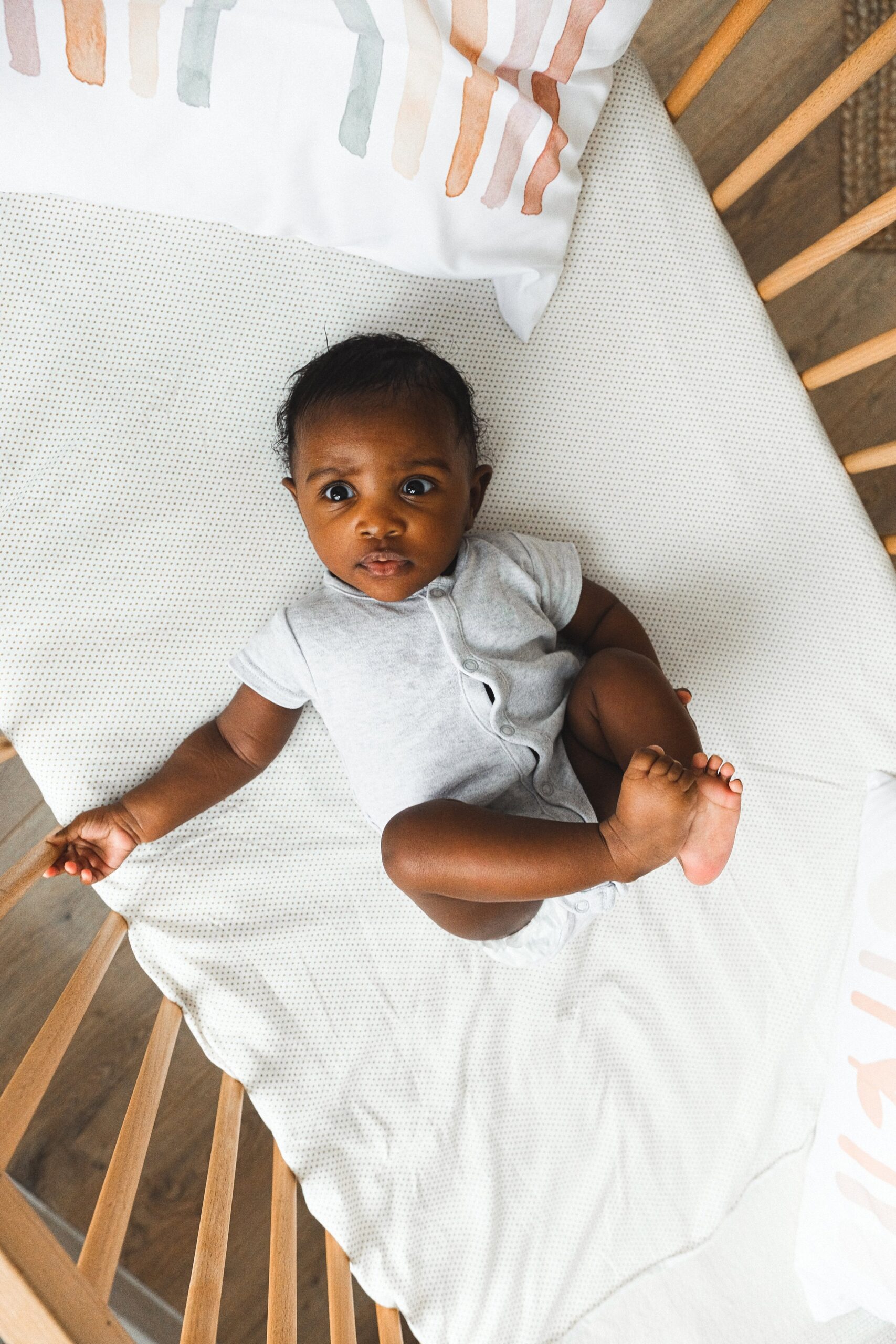What are sleepy cues and how can we use them to help get our baby to sleep easier?
Do you know your baby’s sleepy cues? When babies are tired, they do some pretty distinct things to let us know! Every child’s cues will be a little bit different, but in general there are some cues that most babies will exhibit on the early side of being tired which usually mean it’s a great time to start settling for a nap or bedtime. Then there are the late cues. These are the cues that tend to be more intense and mean get baby to sleep ASAP by whatever means necessary.
These cues can vary from baby to baby so it is important to observe your baby and let them teach you their cues. Using sleepy cues can lead to an easier time settling for sleep, longer naps, and less interruptions during nighttime sleeping. When you pay attention to these cues, it helps your baby from becoming too overtired. It also helps us to put our babies to sleep when they are actually tired so that we don’t spend an hour bouncing in a dark room trying to put down a baby who is not even sleepy yet.
Understanding your baby’s sleepy cues can be a game changer in getting them down for naps and bedtime at the right times. Lots of parents like tracking the clock or wake windows, and that is fine too! But sleepy cues are an even more reliable tool if you can learn to spot them. Some babies show them in really obvious ways and others are much more subtle. Try not to be too hard on yourself if you can’t figure out your baby’s cues- sometimes they are really tough to spot.
So what are some early sleepy cues that you can look for?
-
red eyebrows
-
rooting or nuzzling into you
-
glossy or sleepy looking eyes
-
stretching
-
yawning
-
waving arms and legs
-
looking pale
-
hands by the face
-
looking to feed
-
gaze aversion or staring off into space ***This is one of the most subtle and often missed sleepy cues! When your baby is tired, they will start to disengage from you or whoever they are playing with. They will avert their gaze, become quiet, and be less willing to re-engage with you. Once you learn to look for it, it’s the perfect signal for you to start getting ready to put your baby to sleep!
So what are some of later sleepy cues that may indicate you potentially missed the sweet spot in their tolerance for being awake?
-
baby is extremely fussy and crying*
-
arching their back or going stiff*
-
rubbing their eyes
-
scratching their head or face
-
pulling their hair
-
getting a second wind and all of the sudden being super active or hyper
-
being unusually hard to settle
-
crying
-
needing lots of vestibular input ex: vigorous bouncing or rocking
-
pulling up the knees to their chest*
-
jerking movements or wriggling*
*These can also be signs of feeding issues or discomfort if they are happening while your baby is being fed to sleep, so don’t always assume they mean overtiredness. Seek a trusted Lactation Consultant or IBCLC if you notice these symptoms often.
Of course, another common sleepy cue is babies wanting to nurse or suck to down-regulate. However, rooting is also a cue that a baby just needs to feed. The rooting reflex is when you brush your baby’s cheek or their head makes contact with your body and they turn toward the touch, sometimes even opening their mouth.
Tip: you might offer that first if you do not think there’s been enough wake time for them to be tired quite yet. In young babies especially, feeding or hunger cues and sleepy cues can look kind of similar. It can take some trial and error to figure out the differences and it’s not always easy.
Every child’s cues will be different and vary a bit, for example, some yawn as an early cue and others yawn as a late cue. If you are struggling to figure out what is a sleepy cue for YOUR baby, take notes as to patterns you notice. Be kind to yourself- it may take some time and evaluation to learn your baby’s cues but once you do, you can avoid having an overtired baby and have much better nap and bedtime success!
Was this helpful? Save it for later!






